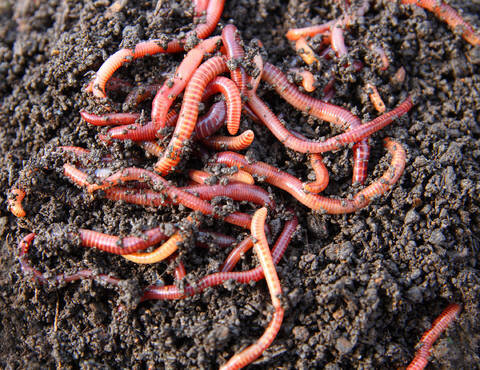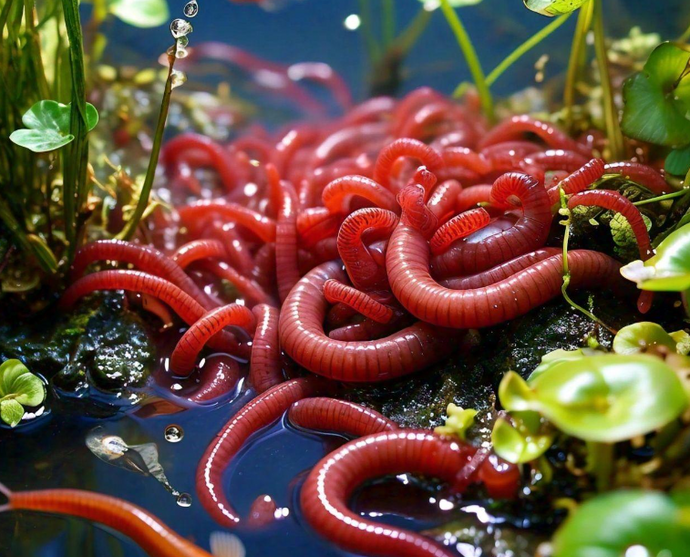Effortless composting red worms: Guide to thriving setups
Effortless composting red worms: Guide to thriving setups
Blog Article
Every Little Thing You Need to Find Out About Red Wigglers for Composting
Red wigglers, or Eisenia fetida, play a crucial duty in the realm of composting, changing natural waste right into useful soil amendments. The process of setting up a worm bin and preserving it can present obstacles.
What Are Red Wigglers?

(red wigglers for sale near me)
Belonging To North America, red wigglers are surface-dwelling organisms that like moist, cozy habitats abundant in decaying raw material. Their diet consists primarily of decaying plant material, food scraps, and various other natural debris, which they take in and damage down successfully. As they digest this material, they create nutrient-rich spreadings that enhance soil fertility.
Red wigglers are hermaphroditic, possessing both male and women reproductive body organs, and can reproduce rapidly under optimum conditions. This ability makes them an ideal choice for composting systems, as their population can increase rapidly. Their strength and adaptability to different atmospheres even more strengthen their relevance in sustainable waste administration techniques. Generally, red wigglers are essential factors to the process of recycling organic waste right into useful compost.
Advantages of Making Use Of Red Wigglers
Utilizing red wigglers in composting systems offers various benefits that boost both the efficiency of waste administration and the top quality of the resulting compost. These worms, clinically referred to as Eisenia fetida, are specifically efficient at breaking down raw material, transforming kitchen area scraps and yard waste right into nutrient-rich garden compost at a sped up rate.
Among the main benefits of making use of red wigglers is their capability to consume large quantities of natural material, frequently processing their weight in food waste daily. This high intake rate brings about much faster disintegration and reduces the quantity of waste sent to landfills. Furthermore, the spreadings created by red wigglers are abundant in crucial nutrients, beneficial microbes, and enzymes, making them a superb fertilizer for yards and plants.
Furthermore, red wigglers grow in a variety of environments, making them versatile for both interior and outdoor composting systems - red wigglers. Their existence in a compost container aids to aerate the product, avoiding smells and advertising a healthy composting process. In general, using red wigglers not only contributes to effective waste monitoring but likewise sustains sustainable horticulture methods with the manufacturing of high-grade garden compost
(Red Wiggler Express Hickory NC)
Setting Up Your Worm Container
To efficiently set up a worm container, it is necessary to select an appropriate container that satisfies the demands of red wigglers while offering a favorable setting for composting. An appropriate container can be made from plastic, wood, or metal, with a capacity of at the very least 1 square foot for every single pound of worms.
Ensure the container has ample drain openings to stop excess dampness, as red wigglers prosper in a damp, but not waterlogged, find more atmosphere. red wigglers. The container must likewise be ventilated to provide enough airflow, avoiding anaerobic problems that could hurt the worms
A suitable location for the worm bin is an awesome, dark area, devoid of straight sunlight and extreme temperature levels, as red wigglers prefer a temperature variety of 55 to 77 degrees Fahrenheit.
Prior to introducing the worms, prepare bed linen products such as shredded newspaper, cardboard, or coconut coir, which will certainly offer both environment and food. Moisten the bed linen lightly to develop an inviting environment for the worms. Take into consideration positioning a cover on the bin to maintain humidity and reduce parasites, while ensuring it can be quickly gotten rid of for upkeep.
Feeding and Treatment Guidelines
Feeding red wigglers is an important aspect of maintaining a healthy composting system. These worms grow on a diverse diet, mainly made up of organic materials such as fruit and veggie scraps, coffee premises, and crushed eggshells. It is necessary to avoid feeding them meat, dairy, and oily foods, as these can develop undesirable smells and bring in bugs.
When introducing food to your worm bin, slice or shred materials right into smaller sized items to assist in quicker disintegration. Begin with percentages to gauge the worms' intake rate, gradually boosting the amount as they adjust. It is suggested to alternate feeding locations within the bin to encourage thorough blending and oygenation of the garden compost.

Troubleshooting Common Issues
Maintaining a flourishing worm composting system can often present obstacles that call for attention and troubleshooting. Common concerns include an undesirable odor, which often suggests overfeeding or the existence of anaerobic problems. To remedy this, reduce the quantity of food included and ensure appropriate aeration by blending the bedding product.
An additional frequent trouble is the retreat of worms from the bin. This can occur because of too much wetness or unsuitable environmental problems. Routinely inspect the moisture degrees, intending for a damp however not soaked uniformity, and maintain optimal temperatures in between 60-80 ° F(15-27 ° C )to produce a comfy habitat for your red wigglers.
Insects, such as fruit flies, can additionally invade worm containers. red wigglers. To combat this, cover food scraps with a layer of bedding or shredded paper to discourage flies from laying eggs. Furthermore, make certain that any food included is fresh and devoid of mold and mildew, which can bring in unwanted parasites
Finally, if your worms appear non-active, look for stress and anxiety aspects such as temperature changes or inadequate moisture. Resolving these typical issues will certainly assist preserve a healthy and balanced and productive worm composting system.
Final Thought
In summary, red wigglers, or Eisenia fetida, play an important duty in sustainable waste management via vermicomposting. Their capability to successfully transform natural waste into nutrient-dense castings boosts soil wellness and advertises plant development. Appropriate setup and upkeep of a worm container, in addition to adherence to feeding standards, make certain a flourishing environment that reduces garbage dump payments. Attending to typical problems promptly further sustains the efficiency of this eco-friendly practice, contributing to environmental sustainability and agricultural efficiency.
Report this page